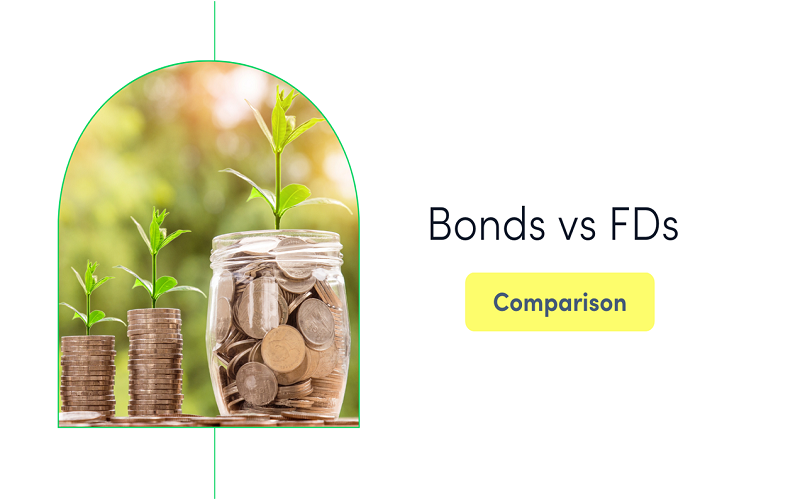When it comes to securing your financial future, understanding the nuances between different investment options is crucial. Fixed deposits (FDs) and bonds are popular choices among conservative investors seeking steady returns with low risk. Despite their similarities, FDs and bonds have distinct characteristics that cater to different investment strategies and preferences. Here are seven key differences between these two investment vehicles:
1. Nature of Investment
Fixed Deposits: Fixed deposit is a type of savings account offered by banks and financial institutions. Investors deposit a lump sum for a predetermined period at a fixed interest rate. At the end of the term, the investor receives the principal amount along with the interest earned.
Bonds: Bonds are debt securities issued by governments, municipalities, or corporations to raise capital. When you purchase a bond, you are essentially lending money to the issuer in exchange for periodic interest payments and the return of the principal amount at maturity. Bonds can be traded in secondary markets, which adds a layer of complexity compared to FDs.
2. Issuer and Regulation
Fixed Deposits: FDs are primarily issued by banks and regulated by banking authorities such as the Reserve Bank of India (RBI) in India, or the Federal Reserve in the United States. The regulation ensures a high level of security and guarantees the return of the deposited amount.
Bonds: Bonds can be issued by various entities, including governments, municipalities, and corporations. The regulatory framework for bonds depends on the issuer and the country of issuance. Government bonds are generally considered safer than corporate bonds, which carry varying degrees of risk depending on the issuer’s creditworthiness.
3. Risk and Return
Fixed Deposits: FDs are considered one of the safest investment options. The principal amount and interest are guaranteed by the bank, and in many countries, a certain amount is insured by the government. However, the returns on FDs are typically lower compared to bonds, reflecting their lower risk.
Bonds: The risk associated with bonds varies widely. Government bonds are usually low-risk with moderate returns, while corporate bonds can offer higher returns but come with greater risk, especially if the issuer’s credit rating is low. The possibility of default by the issuer is a key risk factor in bond investments.
4. Interest Rates
Fixed Deposits: The interest rate on FDs is fixed at the time of investment and remains unchanged throughout the tenure. This provides a predictable return, making it easier for investors to plan their finances.
Bonds: Bonds can have fixed or variable interest rates. Fixed-rate bonds provide a steady income stream, while variable-rate bonds can adjust based on market conditions. Additionally, some bonds offer coupon payments, which are periodic interest payments made to bondholders.
5. Liquidity
Fixed Deposits: FDs are generally less liquid than bonds. Withdrawing funds from an FD before the maturity date usually incurs a penalty, which can reduce the effective return on investment. This makes FDs more suitable for investors who can commit their funds for a fixed period.
Bonds: Bonds are typically more liquid, especially those traded in active secondary markets. Investors can sell their bonds before maturity, although the selling price may vary based on market conditions, interest rates, and the bond’s credit rating. This liquidity provides flexibility but can also introduce market risk.
6. Tax Implications
Fixed Deposits: Interest earned on FDs is taxable as per the investor’s income tax slab. In some countries, banks may deduct tax at source (TDS) if the interest income exceeds a certain threshold. There are no capital gains taxes since FDs do not appreciate in value.
Bonds: Interest income from bonds is also taxable. However, bonds can offer tax advantages, such as tax-free municipal bonds in the United States. Additionally, if a bond is sold before maturity, any capital gains are subject to capital gains tax, which may be lower than regular income tax rates.
7. Investment Goals and Suitability
Fixed Deposits: FDs are ideal for risk-averse investors seeking capital preservation and predictable returns. They are suitable for short- to medium-term investment goals, such as saving for a down payment on a house or creating an emergency fund.
Bonds: Bonds cater to a broader range of investment goals. Government bonds are suitable for conservative investors, while corporate bonds can attract those seeking higher returns. Bonds are also a key component of a diversified investment portfolio, balancing the risk and return dynamics.
In conclusion, while both fixed deposits and bonds offer stable returns with relatively low risk, their differences in nature, risk profile, interest rates, liquidity, tax implications, and suitability for investment goals make them distinct options. Understanding these differences can help investors make informed decisions aligned with their financial objectives.









